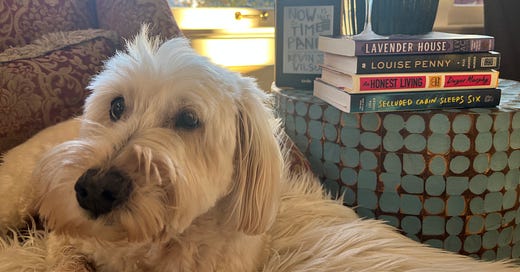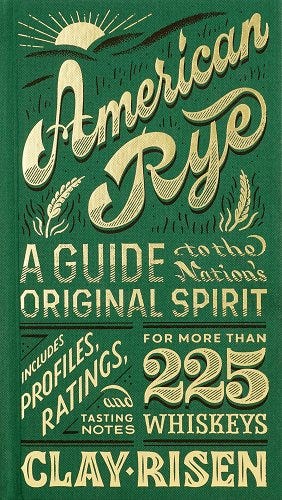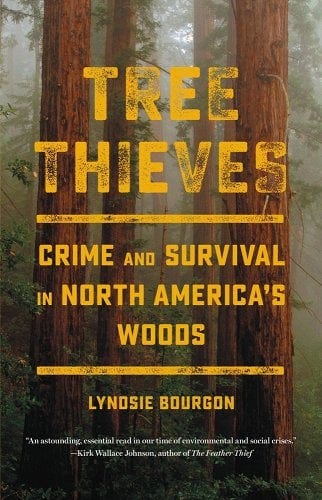Neal's Blood & Whiskey #18
Kevin Wilson; locked-room mysteries (x4); interview w/Lisa Unger; how to drink (rye) whiskey; eco-crimes; and more.
Hello friends and readers,
I want to talk about locked-room mysteries this month — and I’m excited to share a guest post from whiskey author/expert Clay Risen — but first let me give shoutouts to two other books I enjoyed and recommend:
Now Is Not the Time to Panic, by Kevin Wilson — A wonderful story about 16-year-old Frankie Budge, who in the summer of 1996 befriends a boy named Zeke, another arty-misfit-loner like her. Using a photocopier her dumb-ass triplet brothers stole and left in the garage, Frankie and Zeke create a cryptic yet beautiful poster that they christen with their own blood. It contains a phrase Frankie made up on the spot: The edge is a shantytown filled with gold seekers. We are fugitives, and the law is skinny with hunger for us. They begin tacking up photocopies of the poster around their town of Coalfield, Tennessee, accidentally causing the title’s panic. Twenty years later, a reporter contacts Frances Budge, now a successful author, wanting to know if she was the secret creator of the infamous Coalfield Panic of 1996. Wilson is sharp-witted, a keen and empathetic observer of emotion and, in this case, young love. In short, one of the best books I’ve read this year.
An Honest Living, by Dwyer Murphy — Editor of the excellent crime fiction site, CrimeReads (part of LitHub), Murphy here has written an ode of sorts — to old books, New York, to the genre of noir and in particular an homage to Chinatown. An unnamed ex-lawyer takes on a side job that pulls him deeper into the lives of a beautiful and mysterious author and her antiquarian bookseller husband. It’s a slow burn and the narrative meanders into detours and down side alleys (like a ramble through New York, I think is the effect he was going for). I’m an impatient reader and not a lot happens here, but the book has some really nice moments and quirky-fun characters. It grew on me and stuck with me. He’s a very good writer.
4 Locked-room Mysteries
You’ve all read one of these. They go by similar names, these riffs on murder in a small space among a finite number of suspects: locked room, locked mansion, locked train (think Agatha Christie — or Knives Out, or Only Murders in the Building). I love seeing authors play with the construct and make it their own.
A Rule Against Murder — I’ve been on a Louise Penny kick lately (more on that below) and recently read book #4 in the series, in which Inspector Gamache and his wife are celebrating their anniversary at the elegant Manoir Bellechasse resort. If you know the series, you know dead bodies seem to follow Gamache (or vice versa), and in this case the victim is inexplicably crushed by the statue of her dead father. The statue had been placed on a pedestal in the woods a day earlier by his children and widow, who’ve come to the manor for an awkward reunion, all of them nursing old grudges and grievances, all seemingly guilty of something. But Penny likes to take her time. The body doesn’t appear until a third into the book. Her stories are more about people — in this case, an effed-up family, its rivalries and jealousies. “The more devious they got the more they smiled.” The story unfolds at a pace I’ve come to appreciate. It’s a tight and tricky puzzle she’s crafted, slowly revealing the long-hidden ghosts in the family attic.
Secluded Cabin Sleeps Six — This is Lisa Unger’s twentieth novel, already another bestseller, and a testament to her ability to write stories that are consistently tense, page-turny, but also very human and current. This one takes place at a vacation house where a tech-bro shark (appropriately named Mako) has invited his sister, Hannah, her husband, and another couple for a weekend birthday celebration. But there’s a storm brewing, literally and cosmically. Without giving too much away, I’ll say this: sometimes we don’t really know our friends or family, do we? I spoke with Lisa via Zoom and asked her about the start of her impressive two-decade career in crime writing. She credit’s Truman Capote’s Other Voices, Other Rooms with opening the door: “I think that’s where I got permission to be who I am as a writer, because I realized you could explore these dark places and do it with empathy.” Listen to the full interview here:
Lavender House — Lev AC Rosen’s clever twist on the locked-room mystery takes place in 1952 at the queer-friendly estate of the matriarch of a wealthy soap empire, whose widow hires a drunk ex-cop to investigate. The cop was recently fired after being caught in a raid at a gay bar, and is awed by what he finds inside Lavender House. I haven’t finished this one, so I’ll cheat and lean on Walter Mosley’s praise: “Rosen’s smart, bittersweet tale plays with the oldest truth of all: the price we pay for our identity in America.”
White Lotus — We’re a few episodes into season 2 of this HBO series and enjoying it even more than the first. If you missed the first season: a bunch of not-so-nice people arrive for a vacation at a remote Hawaiian resort. And somebody gets dead. In this season, set at a resort in Sicily, we again briefly see a body in the opening scene, then flash back to the arrival of a mixed group of vacationers: a sex-addict Hollywood producer (Michael Imperioli, Sopranos) and his son and father, exploring their Italian roots; two former college roommates turned tech moguls, with their tough and wary wives (including an excellent Aubrey Plaza); and the lone carry-over from Season 1, Tanya, who’s vacationing with her new husband and overworked assistant. HBO is trickling this one out weekly, so we’re only three episodes in.
Also watching: Kleo! This fantastic German series is set after the fall of the Berlin Wall. Kleo Straub is a Stasi assassin who suddenly isn’t sure whose side she’s on. The characters are hilarious, the costumes and art direction and music all spot-on, late-80s perfect. On Netflix.
More on Louise Penny… I’d previously mentioned that I was contributing an essay to a short-run newsletter, Notes From Three Pines, that’s been exploring different aspects of the Gamache series (art, food, travel). My piece just posted this week, a look at the role poetry plays in Penny’s books. Check it out:
More books…
My wife and I tried reading the new back-to-back novels from Cormac McCarthy. Couldn’t make it halfway through either. I’m awed that at his age he’s still writing, and he's obviously brilliant and a deep thinker. But these two — The Passenger and Stella Maris — have veered far from the McCarthy books I prefer (Blood Meridian, No Country for Old Men, The Road).
Deliberate Cruelty: Truman Capote, the Millionaire's Wife, and the Murder of the Century, by Roseanne Montillo — I was asked to provide a blurb for this one, and did so happily, so here it is: "Brash and beautiful, Ann Woodward's escape from a hardscrabble past and her ambitious rise from model and showgirl to the upper tiers of New York's high society is a both a rags to riches story and a cautionary tale — just the kind of story literary provocateur Truman Capote adored. In crafting the side-by-side tales of two arriviste strivers born of humble roots, Roseanne Montillo has given us a thrilling, tragic, Gatsby-esque saga. A wild romp of a story, boldly and beautifully told."
How to drink whiskey
Last year around this time, I’d shared my three favorite ways to drink straight whiskey. And back in March, I’d shared a guest post from whiskey whisperer Clay Risen, an ode to his favorite Irish whiskey. I’m happy to have Clay back as a guest. He’s a New York Times writer whose latest book, American Rye: A Guide to the Nation's Original Spirit, explores the history and recent re-discovery of rye whiskey. Excerpted from that, here are some tips on sipping whiskey…
“What is the right way to drink whiskey? What is the ritual? There is both one correct way, and no single correct way, to drink whiskey – however you want. It’s your drink, you paid for it, and the entire point of imbibing is to enjoy it. But if you are drinking not just to enjoy but to assess a whiskey, I have some pointers, techniques I use when I am on a judging panel or I just want to assess a whiskey.
First, don’t shove your nose in the glass. Treat a whiskey you don’t know like a dog you don’t know – sure, it’s friendly, but if you stick your face in its face, you’re likely to come back with a little less face. Alcohol is volatile, meaning that it vaporizes easily. I recommend you starting from a good distance away, then slowly bringing the glass toward you until you can smell enough without the vapors stinging your nostrils. Don’t rush through this stage; take some time to pick out details and nuances. If at first you smell spices, think, what kind of spices? If it’s cinnamon, what kind? Free associate: If it smells like Red Hots, say so. (Needless to say, you’ll want to write all this down.)
When it comes to tasting, first impressions don’t count. You should take a quick sip to acclimate your mouth to the whiskey; even a relatively mild whiskey is at least 40 percent alcohol. Then, on the second sip, try to think in three stages. The first is what it tastes like right when it hits your lips. The whiskey is still cool and the flavors compact. What are those initial impulses? Start broadly. Ask yourself, is it sweet or spicy? Is it floral? Is it robust, or reticent?
Once you have the whiskey all in your mouth, let it sit there a bit. Swirl it around a bit, so it hits all your taste buds. With your lips closed, open your mouth, to give the whiskey room to expand. I mean this literally: As it warms to your body temperature, the alcohol will start to evaporate, changing the flavor of the whiskey – what some people call the “turn.” How do those changes register to you? Does it grow spicier? More robust? Or does it flatten out?
Finally, swallow, and concentrate on how the whiskey tastes as it hits the back of your mouth and goes down your throat. Is it smooth, or does it burn? And is there much of an aftertaste? Does it linger, or shut off? If you need to, try it again. As you do, go back to those initial notes and expand on them. If the entry was spicy, what kind of spice? Sweet, like cinnamon candy, or peppery, like a chile? Again, don’t be afraid to free associate – that’s the fun of it all.”
(Need more? Watch Clay’s whiskey-drinking videos on his Instagram.)
Last but not least… A couple months back I’d received a copy of Lyndsie Bourgon’s Tree Thieves: Crime and Survival in North America’s Wood, an investigation of timber poaching. Since I wasn’t able to post a review here (too many books, too little time), I reached out to Lyndsie to ask her to share a list of any true-crime favorites about trees or eco-crimes, etc. Here’s Lyndsie…
“When I first started researching tree poaching, I figured that any story I wrote about it would be one of boots-on-the-ground investigation. I imagined a narrative that followed intrepid park rangers and nerdy biologists, who found themselves embroiled in a seedy underbelly in stunning environments, and who pursued unwaveringly terrible criminals.
“Of course, like all good journeys, my assumptions were upturned almost immediately. Crimes against nature, it turns out, are complicated: deeply rooted in history, and inseparable from human motivation and emotion. For my book, Tree Thieves, I’d conducted dozens of interviews in which I heard why people were motivated to poach trees. At the same time, I was reading widely about environmental crime around the world, and many of these books widened my understanding of nature, the law, and how humans exist in both.
Here are a few that stand out:
The Golden Spruce: A True Story of Myth, Madness and Greed, by John Vaillant — I started with a single Sitka spruce, felled on the rocky shores of British Columbia’s Haida Gwaii. Vaillant weaves a thrilling mystery into a broader tale of environmentalism, protest, and colonial violence.
The Book of Trespass: Crossing the Lines that Divide Us, by Nick Hayes — In his stunning travelogue, Nick Hayes guides readers through the history of land access. In doing so, the arbitrary – and often cruel – laws around private land ownership become apparent. Hayes asks his readers to think deeply about how power is exercised through land and environment.
American Fire: Love, Arson and Life in a Vanishing Land, by Monica Hesse — Fire engulfs properties in rural Virginia, and Hesse digs into a series of arson cases with an empathetic approach that guided my own work. In this case, arson becomes a symptom of deindustrialization and rural poverty, not unlike tree poaching.”
And finally, a quick bit of news: The First Kennedys was recently named one of Amazon’s Best Books of the Year, making the top 100 overall and the top 20 in history. Click the image below to see the full list:
Thanks for reading. And if you’d like to support my writing about reading, which would helf for more book buying (and author supporting), consider…
Until next month,
-Neal
Find me on Instagram; sometimes on Facebook, Twitter, LinkedIn, Goodreads










Well THANK YOU, KIND SIR. Really appreciate it.
Also I want your rec for best locked room mystery film!